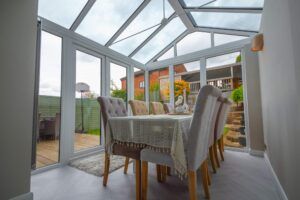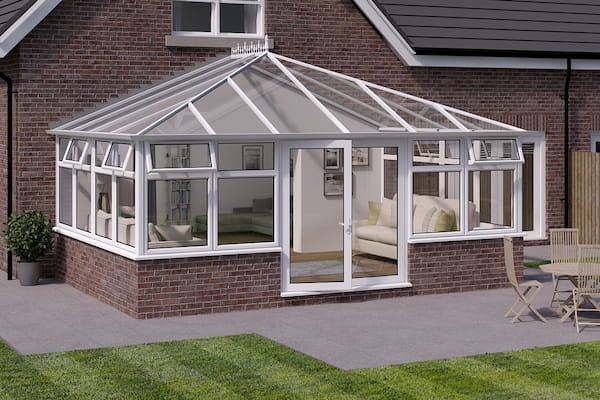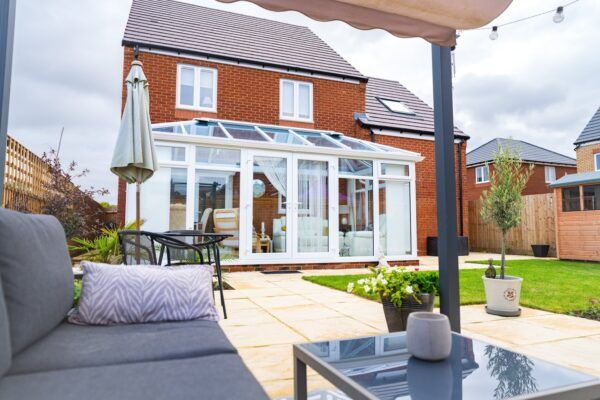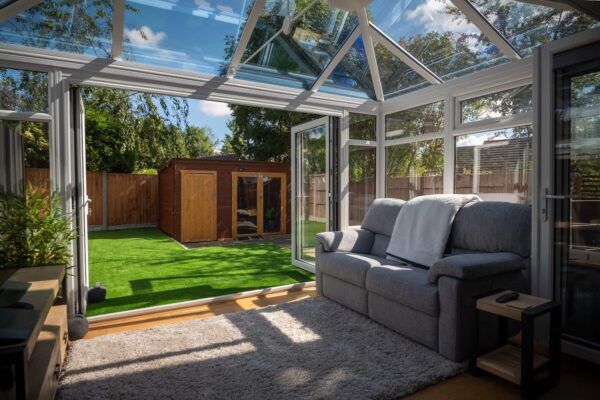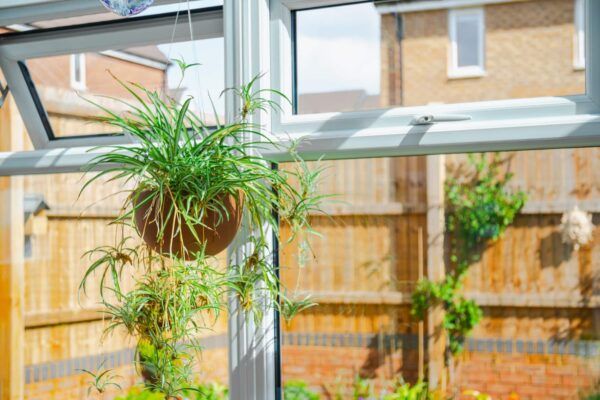To get the most out of your investment, it’s worth considering the impact of different types of conservatory roofs on your budget and how often you’ll use the room once it’s installed.
Whether shopping for a new conservatory or modernising an existing one, understanding the most suitable conservatory roofs is key.
Here, we’ll guide you through the advantages and disadvantages of each type of conservatory roof to help you choose the most suitable option for your project.
Contents:
Types of conservatory roof materials
Polycarbonate conservatory roof
Planning permission for conservatory roofs
What’s the best roof for a conservatory?
Conservatory roof types
When adding extra living space with a conservatory, it’s essential to think about the best conservatory roof for your needs. Whether you want abundant light through a glass roof or an affordable and efficient polycarbonate roof, there are plenty of conservatory roof materials to consider.
| Roof type | Roof style & design | Benefits | Best for |
| Lean-to | Modern slanted roof | Modern slanted roof with a large glazing area for maximum light. | All properties, including small spaces |
| Edwardian | Pitched roof and decorative finials | Flat-fronted design with sleek lines, maximising floor space. | Traditional homes and bungalows. |
| Gable | High-vaulted roof | High-vaulted roof for a spacious, airy feel. | Period and modern homes. |
| Victorian | Pitched roof, and decorative finials | Steeply pitched roof, bay front, and decorative finials. | Traditional homes. |
| Hipped-Back | Sloping pitched roof that ‘hips’ back to the property wall provided with a box gutter | Sloping roof that connects to the home’s wall. | Height-restricted homes like bungalows. |
| Glass | Transparent roof panels | Transparent panels for exceptional natural light. | All properties |
| Polycarbonate | Lightweight polycarbonate sheets | Lightweight, cost-effective, and strong material. | Budget-conscious projects. |
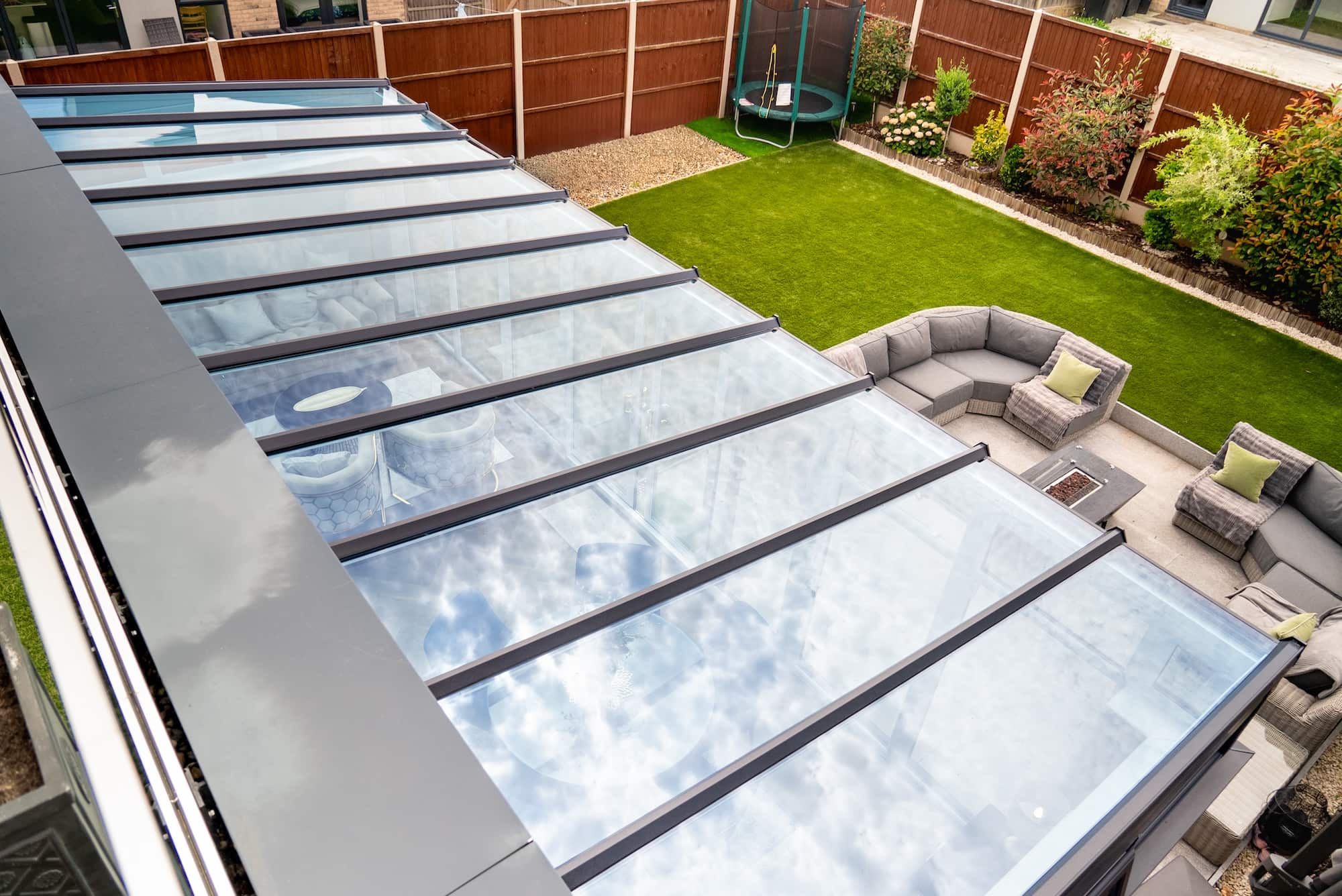
Types of conservatory roof materials
A range of options are available, including tiled, glass and polycarbonate roofs. The choice of roof type plays a role in regulating the temperature of the room and the amount of natural light entering the space. Therefore, it’s crucial to choose the right roofing option for your functional needs.
At ConservatoryLand, our roofing products are designed to suit various budgets and individual requirements. We offer two tried-and-tested options: the polycarbonate conservatory roof and the glass conservatory roof.
While the roof material is key, the style of your conservatory can also influence the choice of roof. For example:
- Lean-to often benefits from a lightweight polycarbonate roof, offering great value and efficiency.
- Orangeries, with their brickwork and solid walls, often have a solid flat roof perimeter with a glazed area in the middle.
- Victorian and Edwardian conservatories, with their more complex shapes, can look stunning with a glass roof, maximising light and space.
Polycarbonate conservatory roof
Polycarbonate conservatory roofs are constructed from thin layered sheets of transparent or coloured plastic. The thicker the polycarbonate, the better the insulation, as the gaps between the layers trap warm air, improving energy efficiency.
At ConservatoryLand, you can upgrade your polycarbonate roof to a thickness of up to 32mm for even better insulation.
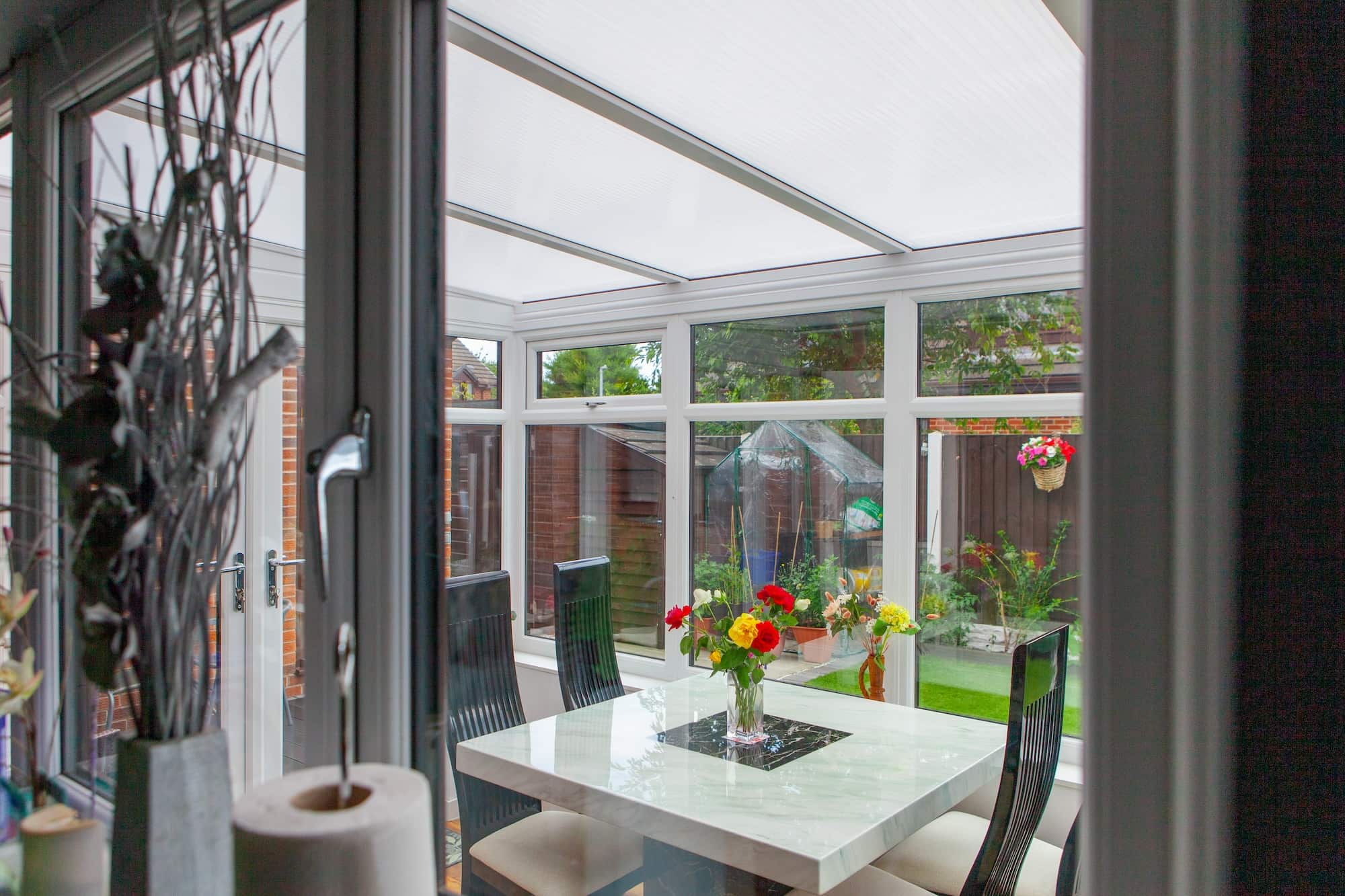
Advantages of choosing a polycarbonate conservatory roof
- Lightweight yet strong: Polycarbonate plastic roofing sheets are a hardwearing alternative to a glass conservatory roof. They are designed to withstand extreme temperatures without cracking or breaking, and they are easier to transport and quicker to install than glass roofs.
- Budget-friendly: Polycarbonate roofs are popular with homeowners looking to build a conservatory on a budget. Opting for a polycarbonate conservatory roof instead of a glass roof can help save on overall conservatory costs.
- Keep it cool: UV-blocking tinted polycarbonate reduces heat build-up in summer, keeping your conservatory cooler compared to clear polycarbonate roofs.
Glass conservatory roof
Glass is a popular choice for conservatories, offering plenty of natural light and excellent insulation.
Modern glass conservatory roofs have much to offer thanks to contemporary manufacturing methods, making them a more affordable, warmer, quieter and more convenient option for many households with a conservatory.
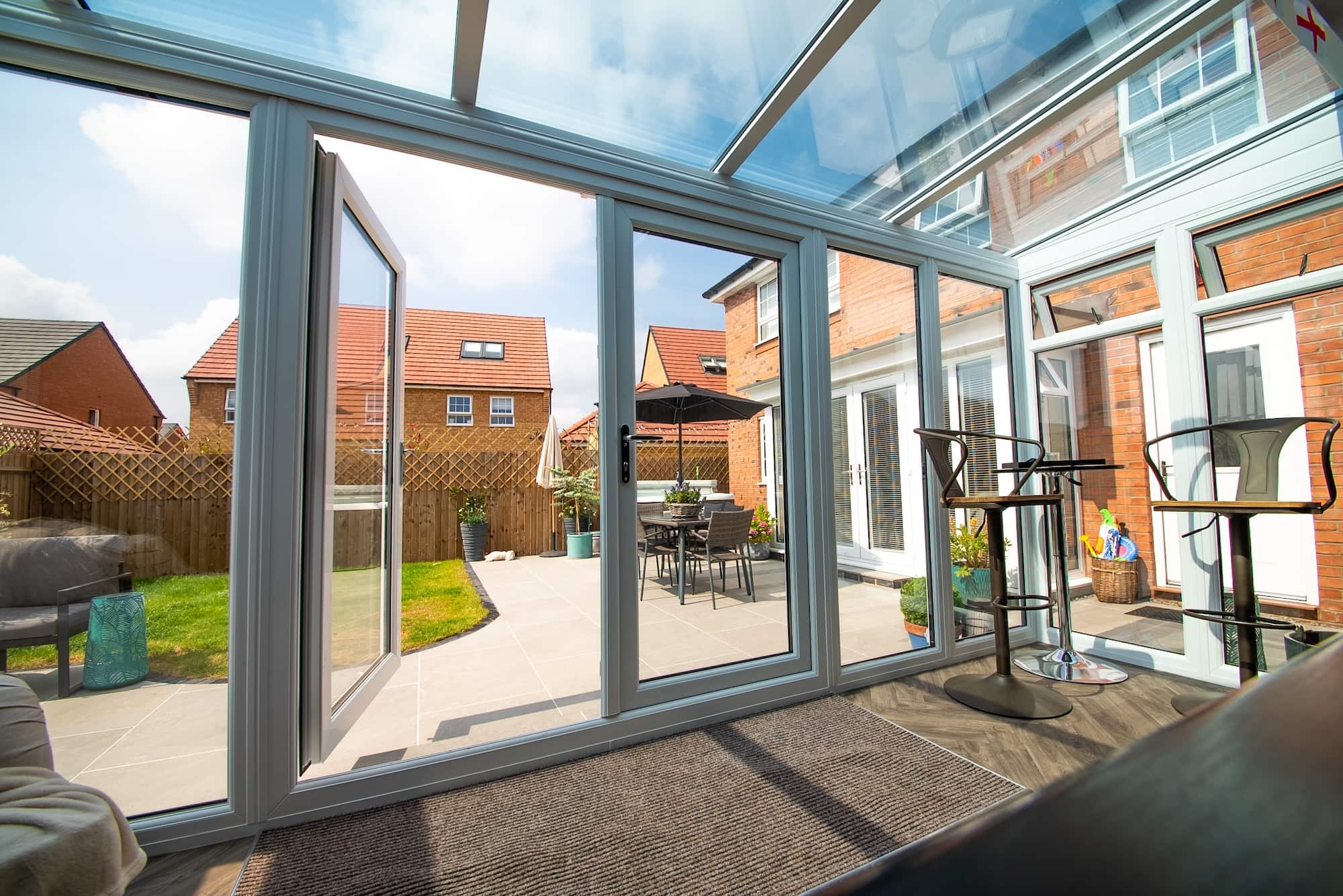
Advantages of a glass conservatory roof
- Long-lasting: A durable glass conservatory roof can withstand extreme weather and maintain its attractive appearance for longer with the right upkeep and maintenance.
- A clear view: Unlike a polycarbonate roof, glass rooms offer transparent glazing, creating a bright, open living space that feels connected to the outdoors.
- Easy to repair: In the rare event of glass damage or faults, individual panels can be replaced quickly and easily with minimal disruption to your home.
- Extra insulation: To keep your conservatory cool in summer and warm in winter, a glass conservatory roof filled with argon gas helps maintain insulation, making the space usable all year round. Insulated glass roofs will also help reduce energy bills by limiting heat loss.
- Sound minimiser: With a polycarbonate roof, a light downpour might sound like a hailstorm. However, a glass conservatory roof is far quieter, even during harsh weather.
- Self-cleaning: There are various types of conservatory roof materials on the market, and ConservatoryLand’s self-cleaning glazing is a popular choice among our customers. It can help to maintain a cleaner conservatory without the hassle of washing the roof yourself.
Planning permission for conservatory roofs
If you’re considering replacing or altering your conservatory roof, you may need to obtain planning permission. Regulations vary depending on the scope of the changes and local building codes, so it’s essential to check with your local authority before proceeding with any major alterations to ensure compliance and avoid potential issues.
For example, if you’re replacing an existing roof with one of the same type and design, planning permission may not be required under permitted development rights. However, if the new roof differs in height, style or material, you may need planning permission.
There are a few key conditions you should be aware of:
- Height restrictions: Your conservatory’s height should not exceed that of your house’s roof. If you live in a single-storey property, like a bungalow, a significantly large conservatory might violate this condition. In such cases, consider a smaller conservatory to avoid needing planning permission approval.
- Eaves and ridge height: The eaves of your conservatory should not be higher than those of the house. Additionally, the highest point of the conservatory should not exceed the height of the existing house’s roof ridge line.
- Roof pitch for two-storey buildings: If your conservatory is more than one storey tall, the roof pitch must match that of the house’s roof.
If you’re unsure whether your conservatory would be considered a permitted development under these conditions, it’s always best to consult with your local planning authority before starting construction.
For more information on planning permission, visit our guide here.
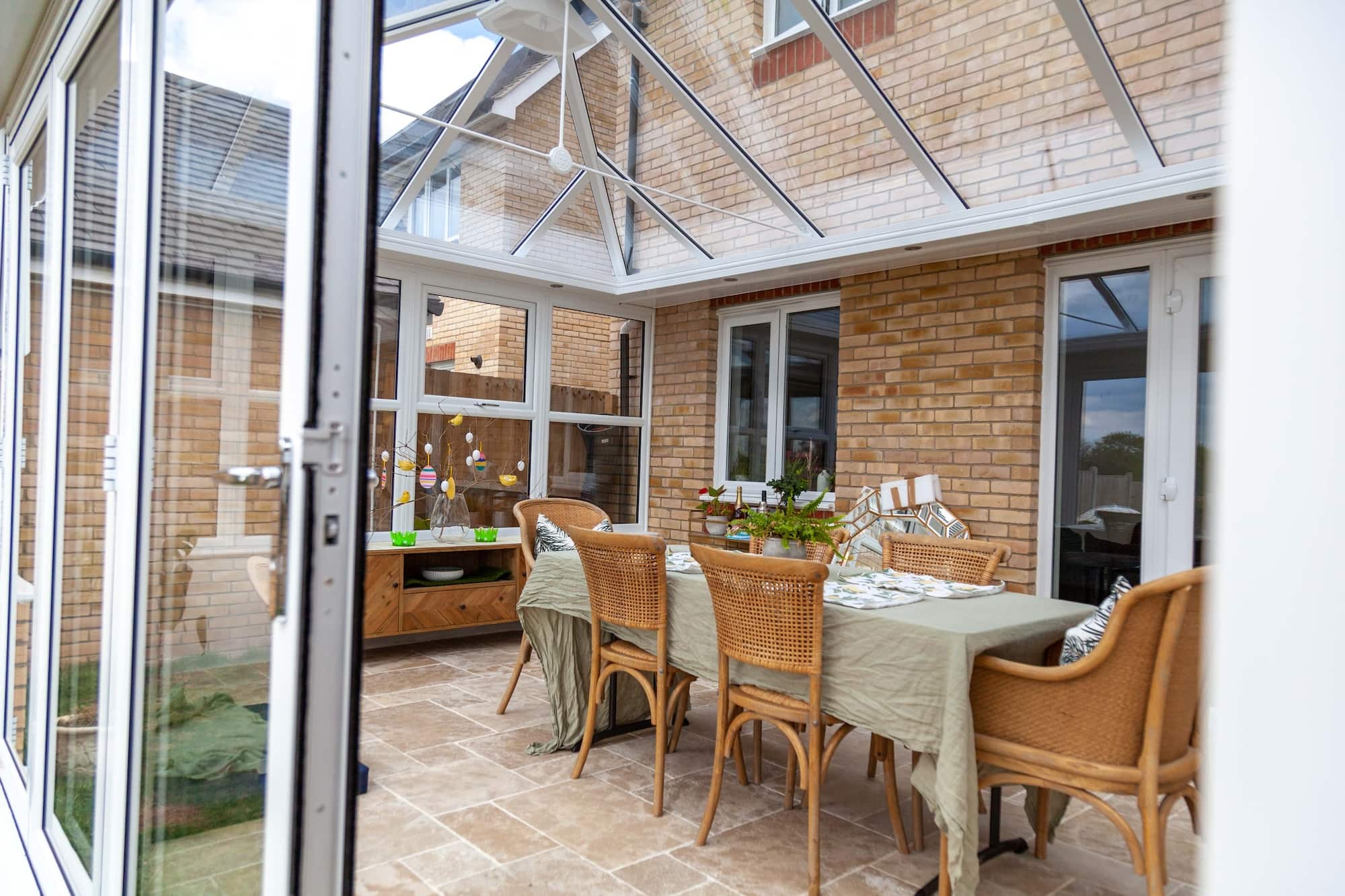
FAQs
Why is choosing the right conservatory roof so important?
Conservatory roofs can become dirty and stained over time because of exposure to elements such as rain, dust and debris from nearby trees. This might make the conservatory appear unattractive and reduce its aesthetic value.
Can I change the shape of my conservatory roof?
With a provider who supplies replacement parts, you may be able to change the design of your conservatory roof. However, considerable changes to the existing structure may be required, making the process complex and costly.
What is the cheapest roof type for my conservatory?
The most affordable roof type for a conservatory depends on several factors, including its size, shape, and your budget.
A polycarbonate roof, which is lightweight and durable, is a popular choice because it’s relatively inexpensive compared to other roofing materials, like glass conservatory roofs. At ConservatoryLand, polycarbonate is available in a range of thickness sizes and colours, so you can choose a style that suits your preferences.
What’s the best roof for a conservatory?
The best roof for your conservatory depends on your needs. Glass roofs are popular for their insulation and abundant natural light, while polycarbonate roofs are a more budget-friendly, durable option.
If you’re still undecided you can use our quote engine to design your perfect conservatory and receive an accurate, no-obligation quote instantly. Or, you can download a free brochure to explore our range of conservatories, including our roof types and materials.
